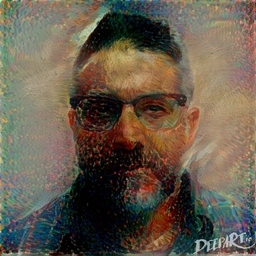
Daniel Clery
Astronomical Journalist at Science Magazine
Journalist at @NewsfromScience. Writes about all things astronomical. Author of A Piece of the Sun: The Quest for Fusion Energy. Opinions are my own.
Articles
-
1 week ago |
science.org | Sarah Crespi |Meagan Cantwell |Daniel Clery
W.
-
2 months ago |
science.org | Daniel Clery
Researchers have found promising hints that the atmosphere of a distant planet contains gases linked to life, BBC reports today. A team led by University of Cambridge astronomer Nikku Madhusudhan reports in The Astrophysical Journal Letters that it used NASA’s JWST telescope to detect the signatures of the gases dimethyl sulfide (DMS) and dimethyl disulfide (DMDS) in starlight that had passed through the atmosphere of K2-18b, a massive planet 120 light-years from Earth.
-
2 months ago |
science.org | Daniel Clery
A dark horse reactor design has emerged as a contender in the race to develop a commercial fusion reactor. Doughnut-shaped machines called tokamaks have long been the favorites of scientists hoping to fuse atoms to generate energy. Their twistier cousins, stellarators, had gotten less attention—and funding—because they didn’t perform as well and their complex geometries are harder to design and build. But stellarators have properties that could, in the long run, make them better as power plants.
-
Mar 20, 2025 |
science.org | Daniel Clery
Dark energy, the mysterious force accelerating the expansion of the universe, may not have always provided a steady push as cosmologists have assumed for decades. Instead, the latest data from the powerful Dark Energy Spectroscopic Instrument (DESI) add more evidence that the universe’s expansion accelerated faster in the past than it is doing now.
-
Mar 19, 2025 |
science.org | Daniel Clery
Dark energy, the mysterious force accelerating the expansion of the universe, may not have always provided a steady push as cosmologists have assumed for decades. Instead, the latest data from the powerful Dark Energy Spectroscopic Instrument (DESI) add more evidence that the universe’s expansion accelerated faster in the past than it is doing now.
Try JournoFinder For Free
Search and contact over 1M+ journalist profiles, browse 100M+ articles, and unlock powerful PR tools.
Start Your 7-Day Free Trial →X (formerly Twitter)
- Followers
- 1K
- Tweets
- 1K
- DMs Open
- No

“There’s something systematic in the measurements. Until we can establish unambiguously where the issue lies in the nearby universe, we can’t be claiming that there’s additional physics in the distant universe.” -- Wendy Freedman | @NewsfromScience https://t.co/j35N8kv3td

Disaster avoided? There's a good chance the Milky Way may avoid a galactic crash with its neighbor Andromeda. @NewsfromScience https://t.co/JnGivI1Deb

“We can’t keep using the ground and the atmosphere as a dumpster.” Burned-up satellites are polluting the atmosphere | @NewsfromScience | Science | AAAS https://t.co/Jcer0Rz132